
- •Quick Quiz 1
- •Quick Quiz 2
- •Quick Quiz 3
- •Quick Quiz 4
- •Course of lectures «Contemporary Physics: Part2»
- •The Lorentz Transformation Equations
- •The Lorentz Transformation Equations
- •The Lorentz Transformation Equations
- •The Lorentz Velocity Transformation Equations
- •The Lorentz Velocity Transformation Equations
- •Relativistic Linear Momentum and
- •Relativistic Linear Momentum and
- •Relativistic Linear Momentum and
- •Relativistic Linear Momentum and
- •Relativistic Energy
- •Relativistic Energy
- •Relativistic Energy
- •Relativistic Energy
- •Relativistic Energy
- •Relativistic Energy
- •Relativistic Energy
- •Mass and Energy
- •The General Theory of Relativity
- •The General Theory of Relativity
- •The General Theory of Relativity
- •The General Theory of Relativity
- •The General Theory of Relativity
- •The General Theory of Relativity
- •The General Theory of Relativity
- •Quick Quiz 1

 Quick Quiz 1
Quick Quiz 1
A baseball pitcher with a 90-mi/h fastball throws a ball while standing on a railroad flatcar moving at 110 mi/h. The ball is thrown in the same direction as that of the velocity of the train. Applying the Galilean velocity transformation equation, the speed of the ball relative to the Earth is (a) 90 mi/h
(b) 110 mi/h (c) 20 mi/h (d) 200 mi/h (e) impossible to determine.

 Quick Quiz 2
Quick Quiz 2
A crew watches a movie that is two hours long in a spacecraft that is moving at high speed through space. Will an Earthbound observer, who is watching the movie through a powerful telescope, measure the duration of the movie to be (a) longer than, (b) shorter than, or (c) equal to two hours? 

 Quick Quiz 3
Quick Quiz 3
Suppose astronauts are paid according to the amount of time they spend traveling in space. After a long voyage traveling at a speed approaching c, would a crew rather be paid according to (a) an Earth-based clock, (b) their spacecraft’s clock, or (c) either clock?
speed approaching c, would a crew rather be paid according to (a) an Earth-based clock, (b) their spacecraft’s clock, or (c) either clock?

Quick Quiz 4
You are packing for a trip to another star. During the journey, you will be traveling at 0.99c. You are trying to decide whether you should buy smaller sizes of your clothing, because you will be thinner on your trip, due to length contraction. Also, you are considering saving money by reserving a smaller cabin to sleep in, because you will be shorter when you lie down. Should you (a) buy smaller sizes of clothing, (b) reserve a smaller cabin, (c) do neither of these, or (d) do both of these?

Course of lectures «Contemporary Physics: Part2»
Lecture №7
The Lorentz Transformation Equations. The
Lorentz Velocity Transformation
Equations. Relativistic Linear Momentum and
the Relativistic Form of Newton’s Laws.
Relativistic Energy. Mass and Energy. The
General Theory of Relativity.
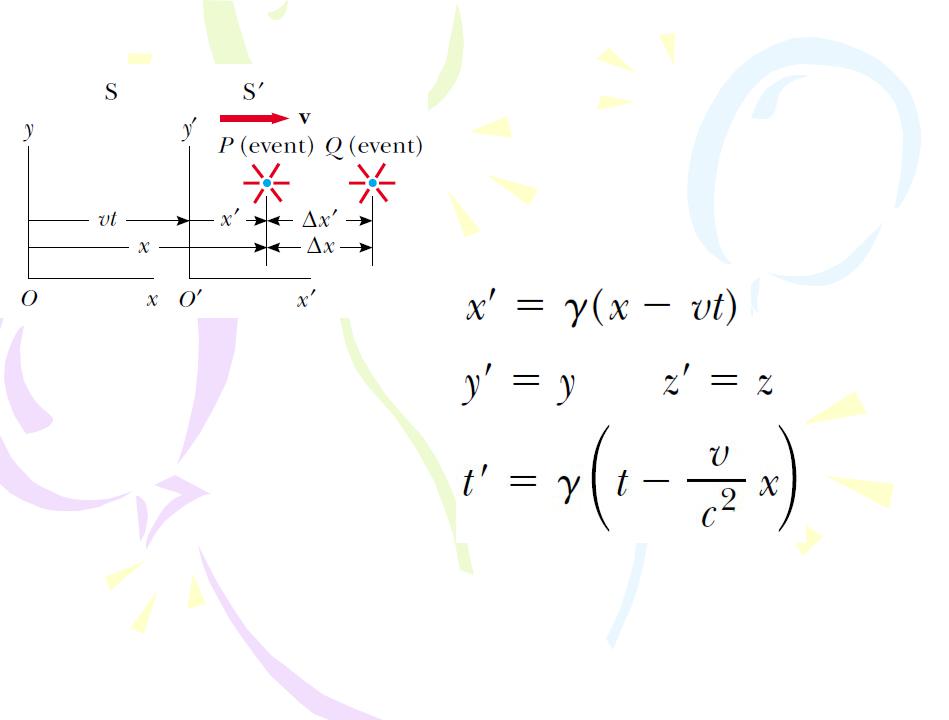
The Lorentz Transformation Equations
The equations that are valid for all speeds and enable us to transform coordinates from S to S’ are the
to transform coordinates from S to S’ are the
Lorentz transformation equations:
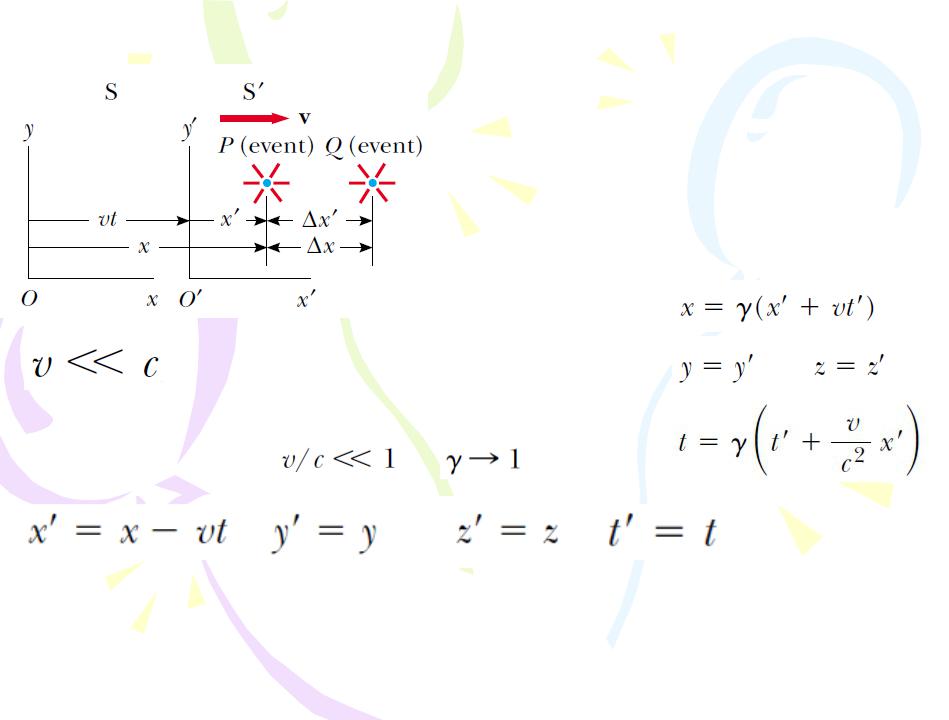
The Lorentz Transformation Equations
If we wish to transform coordinates in the S’ frame to coordinates in the S frame, we simply replace v by -v and interchange the primed and unprimed coordinates: 
the Lorentz transformation equations should reduce to the Galilean equations
as v approaches zero,
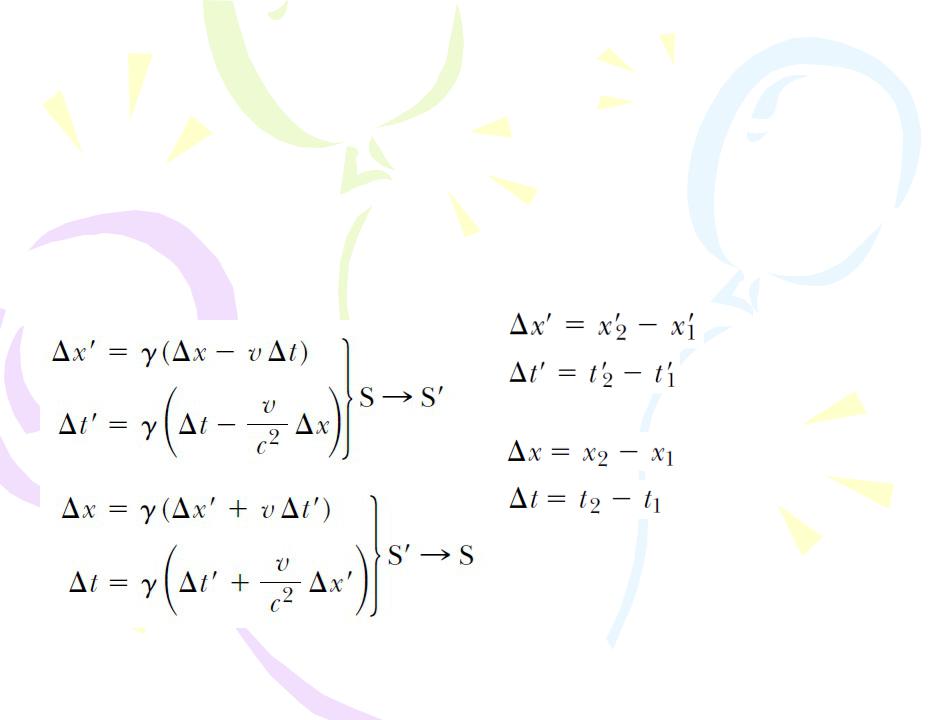
The Lorentz Transformation Equations
In many situations, we would like to know the difference in coordinates between two events or the time interval between two events as seen by observers O and O’. We can accomplish this by writing the Lorentz equations in a form suitable for describing pairs of events. We can express the differences between the four variables
x, x’, t, and t’ in the form:
the differences measured by observer O’
the differences measured by observer O
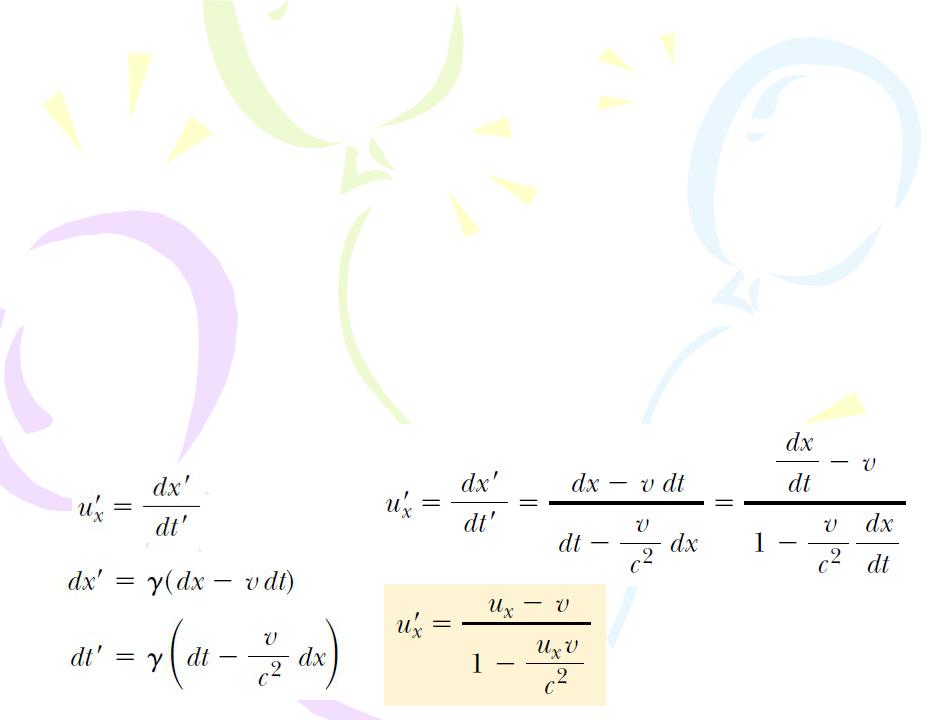
The Lorentz Velocity Transformation Equations
Suppose two observers in relative motion with respect to each other are both observing the motion of an object. Previously, we defined an event as occurring at an instant of time. Now, we wish to interpret the “event” as the motion of the object. We know that the Galilean velocity transformation is valid for low speeds. How do the observers’ measurements of the velocity of the object relate to each other if the speed of the object is close to that of light? Once again S’ is our frame moving at a speed v relative to S. Suppose that an object has a velocity component u’x measured in
the S frame, where
(1)
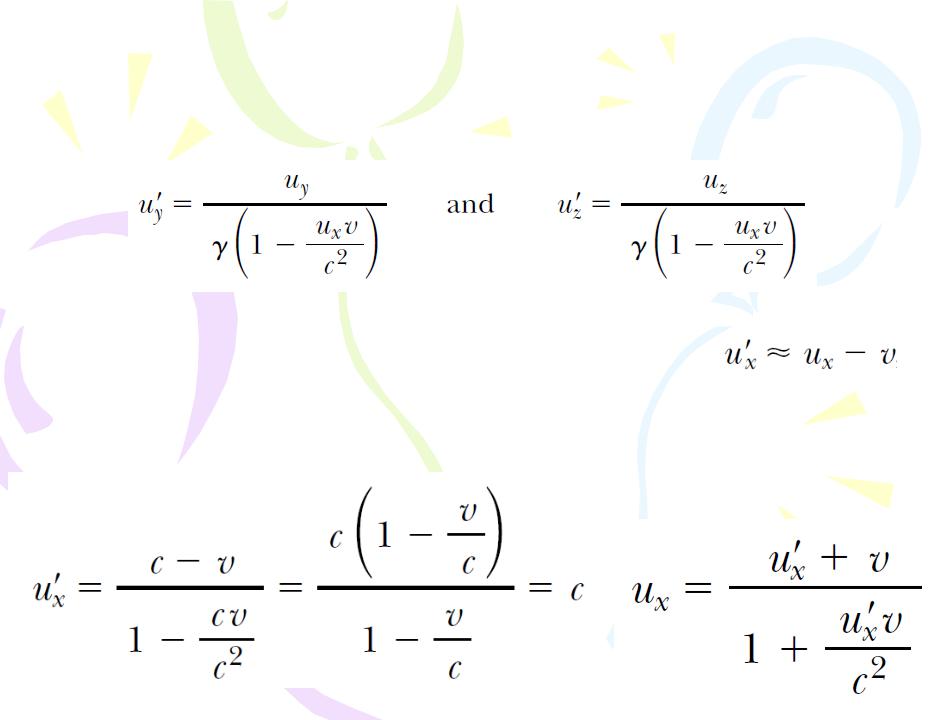
The Lorentz Velocity Transformation Equations
If the object has velocity components along the y and z axes, the components as measured by an observer in S’ are 
When v is much smaller than c (the nonrelativistic case), the denominator of Equation 1 approaches unity, and so
which is the Galilean velocity transformation equation. In another extreme, when  Equation 1 becomes
Equation 1 becomes
